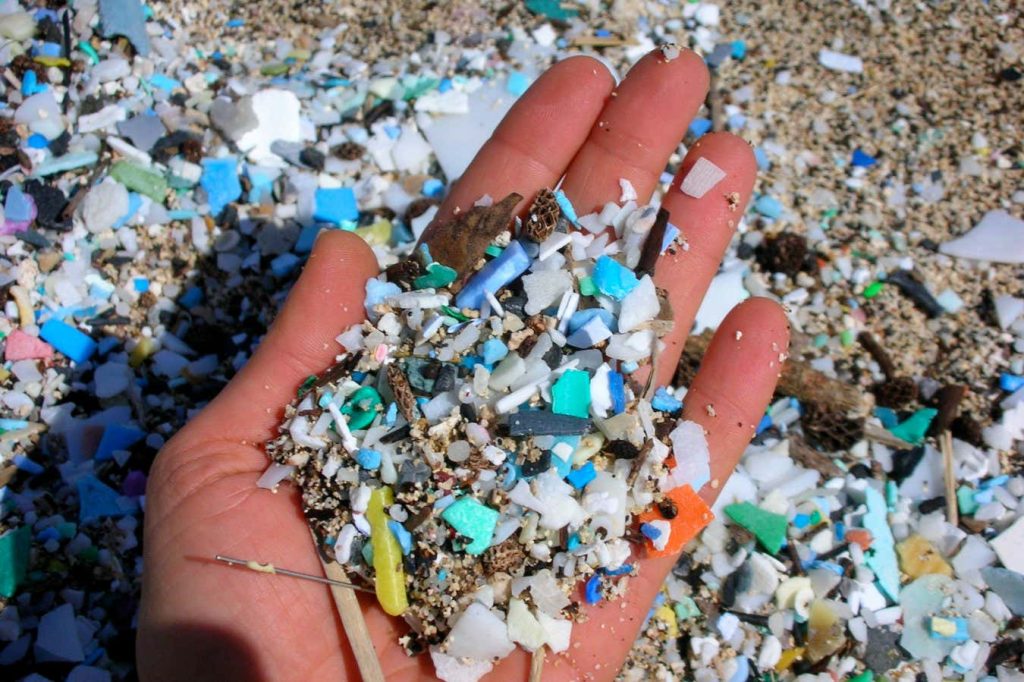A handful of plastic washed ashore at Kamilo Beach, Hawaii
The 5 Gyres Institute, CC-BY 4.0 (https://creativecommons.org/licenses/by/4.0/)
Concentrations of microplastics in the oceans have surged in the past 18 years, with researchers now estimating there are 2.3 million tonnes floating in the sea worldwide.
Microplastics – defined as plastic particles less than 5 millimetres long – are commonly found in the bodies of sea turtles, whales and fish. Studies have tracked microplastic pollution in oceans since the 1970s, but it wasn’t until 2005 that plastic concentrations started to rapidly and consistently increase.
Marcus Eriksen and Lisa Erdle at the the 5 Gyres Institute in Santa Monica, California, and their colleagues looked at data on plastic pollution at the ocean surface that had been collected between 1979 and 2019. That data came from more than 11,000 collection stations covering most major ocean regions.
Advertisement
Patchy data made it impossible to identify any clear trends on plastic concentrations between 1979 and 1990, while between 1990 and 2004 plastic concentrations showed fluctuations with no clear trend.
But the team found that in the past 18 years, ocean plastic concentrations have risen sharply, to more than 10 times their 2005 levels.
“We’ve found an alarming trend of exponential growth of microplastics in the global ocean since the millennium, reaching over 170 trillion plastic particles,” Eriksen said in a press release.
The sharp uptick in concentrations since 2005 may be due to a boom in plastic production around this time, says Erdle. Global plastic production almost doubled between 2005 and 2019, from 263 million tonnes to 460 million tonnes, according to the OECD and Our World in Data.
It could also be the result of a failure to introduce mandatory measures to reduce pollution, Erdle says, even as waste accumulates as new plastic enters the oceans and older pieces break down into microplastics. “In recent years, there have been no binding international policies, and we see a rapid increase in plastic pollution in the world’s oceans,” she says.
The study, which Erdle says is unique in its geographical breadth and four-decade time span, only looked at data up to 2019. This was in part because the researchers needed to set a “clear cut-off point” for analysis, Erdle says.
Since then, some countries, including the UK, have introduced laws to tackle microplastic pollution, such as banning the use of plastic straws and curtailing demand for single-use carrier bags.
But Erdle believes more radical action targeting the entire global plastic industry will be necessary to make a real dent in marine pollution levels.
In 2022, countries agreed to draw up a global treaty to tackle plastic pollution, with a draft text expected by 2024. Erdle says the treaty must be binding and enforceable, and address the full life cycle of plastics.
The agreement should include a cap on overall plastic production, she says, describing the measure as an “effective tool” to reduce ocean microplastic concentrations.
Without a widespread shift in plastic policy, the rate at which plastic flows into the world’s oceans could be 2.6 times higher by 2040 compared with 2016, the study warns.
Other scientists have also backed calls for a global cap on plastic production, but such a move would prove hugely controversial and is likely to be heavily resisted by petrochemical industries.
Topics:
Read The Full Article Here

